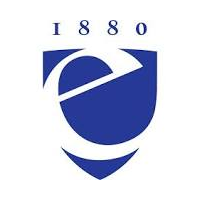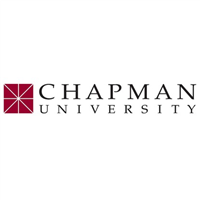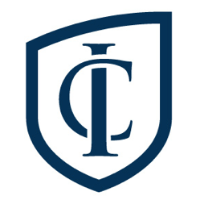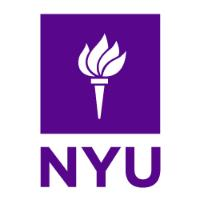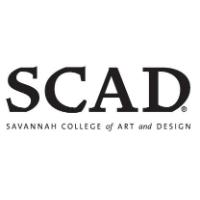What do they do?
Edit moving images on film, video, or other media. May work with a producer or director to organize images for final production. May edit or synchronize soundtracks with images.
Also known as:
Editor, Electronic News Gathering Editor (ENG Editor), Film Editor, News Editor, News Video Editor, News Videotape Editor, Non-Linear Editor, Online Editor, Tape Editor, Television News Video Editor, Video Editor
-
8.1%
Change
Ranks #36 in job growth rate40Job Openings
Ranks #27 in net job growth
-
Emerson College
Boston, MA
-
Ithaca College
Ithaca, NY
-
Chapman University
Orange, CA
-
University of North Carolina School of the Arts
Winston Salem, NC
-
New York University
New York, NY
Looking for colleges that offer a specific major? Use the College Match Tool to find your best-matched schools and discover your estimated Net Price!
- Doctorate or Professional Degree (1%)
- Master's degree (9%)
- Bachelor's degree (56%)
- Associate's degree (8%)
- Some college, no degree (17%)
- High school diploma equivalent (7%)
- Less than high school diploma (1%)
Most Popular Majors that prepare Film and Video Editors
-
#1
-
Degrees Granted
5,257
-
Female Students
2,314
-
Male Students
2,943
-
Median Starting Salary
$39,600
-
-
#2
-
Degrees Granted
4,232
-
Female Students
1,991
-
Male Students
2,241
-
Median Starting Salary
$38,000
-
-
#3
-
Degrees Granted
450
-
Female Students
172
-
Male Students
278
-
Median Starting Salary
$40,500
-
-
#4
-
Degrees Granted
332
-
Female Students
46
-
Male Students
286
-
Median Starting Salary
$40,500
-
-
#5
-
Degrees Granted
233
-
Female Students
49
-
Male Students
184
-
Median Starting Salary
$40,500
-
People in this career often have these skills:
- Active Listening - Giving full attention to what other people are saying, taking time to understand the points being made, asking questions as appropriate, and not interrupting at inappropriate times.
- Critical Thinking - Using logic and reasoning to identify the strengths and weaknesses of alternative solutions, conclusions, or approaches to problems.
- Reading Comprehension - Understanding written sentences and paragraphs in work-related documents.
People in this career often know a lot about:
- Communications and Media - Knowledge of media production, communication, and dissemination techniques and methods. This includes alternative ways to inform and entertain via written, oral, and visual media.
- English Language - Knowledge of the structure and content of the English language including the meaning and spelling of words, rules of composition, and grammar.
- Computers and Electronics - Knowledge of circuit boards, processors, chips, electronic equipment, and computer hardware and software, including applications and programming.
- Telecommunications - Knowledge of transmission, broadcasting, switching, control, and operation of telecommunications systems.
- Fine Arts - Knowledge of the theory and techniques required to compose, produce, and perform works of music, dance, visual arts, drama, and sculpture.
- Production and Processing - Knowledge of raw materials, production processes, quality control, costs, and other techniques for maximizing the effective manufacture and distribution of goods.
- Customer and Personal Service - Knowledge of principles and processes for providing customer and personal services. This includes customer needs assessment, meeting quality standards for services, and evaluation of customer satisfaction.
- Engineering and Technology - Knowledge of the practical application of engineering science and technology. This includes applying principles, techniques, procedures, and equipment to the design and production of various goods and services.
People in this career often have talent in:
- Oral Comprehension - The ability to listen to and understand information and ideas presented through spoken words and sentences.
- Near Vision - The ability to see details at close range (within a few feet of the observer).
- Oral Expression - The ability to communicate information and ideas in speaking so others will understand.
- Information Ordering - The ability to arrange things or actions in a certain order or pattern according to a specific rule or set of rules (e.g., patterns of numbers, letters, words, pictures, mathematical operations).
- Written Comprehension - The ability to read and understand information and ideas presented in writing.
- Fluency of Ideas - The ability to come up with a number of ideas about a topic (the number of ideas is important, not their quality, correctness, or creativity).
- Visualization - The ability to imagine how something will look after it is moved around or when its parts are moved or rearranged.
- Originality - The ability to come up with unusual or clever ideas about a given topic or situation, or to develop creative ways to solve a problem.
- Speech Clarity - The ability to speak clearly so others can understand you.
- Written Expression - The ability to communicate information and ideas in writing so others will understand.
- Deductive Reasoning - The ability to apply general rules to specific problems to produce answers that make sense.
- Category Flexibility - The ability to generate or use different sets of rules for combining or grouping things in different ways.
- Selective Attention - The ability to concentrate on a task over a period of time without being distracted.
- Speech Recognition - The ability to identify and understand the speech of another person.
People in this career often do these activities:
- Edit audio or video recordings.
- Determine presentation subjects or content.
- Manage content of broadcasts or presentations.
- Operate communications, transmissions, or broadcasting equipment.
- Label production materials.
- Verify accuracy of data.
- Create computer-generated graphics or animation.
- Operate audio recording equipment.
- Provide information to coworkers.
- Study scripts to determine project requirements.
- Collaborate with others to determine technical details of productions.
- Coordinate activities of production personnel.
- Develop promotional materials.
- Collaborate with others to prepare or perform artistic productions.
- Determine technical requirements of productions or projects.
This page includes data from:

 Occupation statistics: USDOL U.S. Bureau of Labor Statistics Occupational Employment Statistics
Occupation statistics: USDOL U.S. Bureau of Labor Statistics Occupational Employment Statistics
 Videos: CareerOneStop, USDOL/ETA and the Minnesota Department of Employment & Economic Development
Videos: CareerOneStop, USDOL/ETA and the Minnesota Department of Employment & Economic Development


